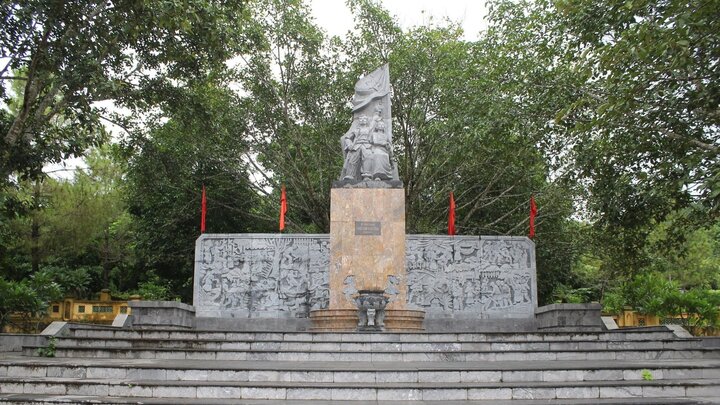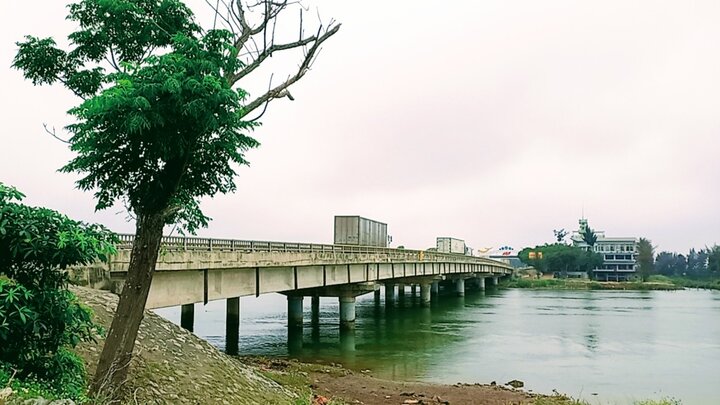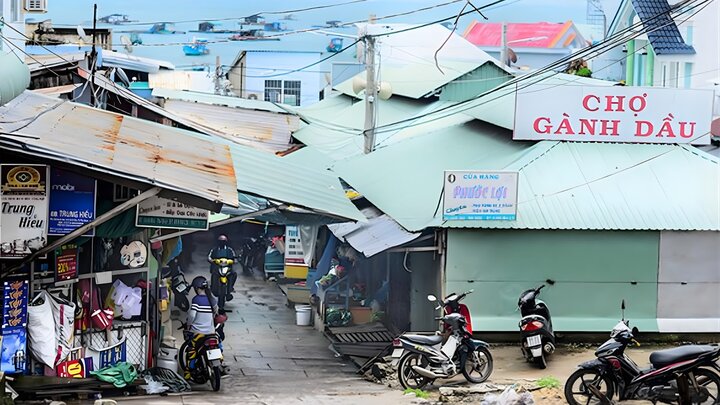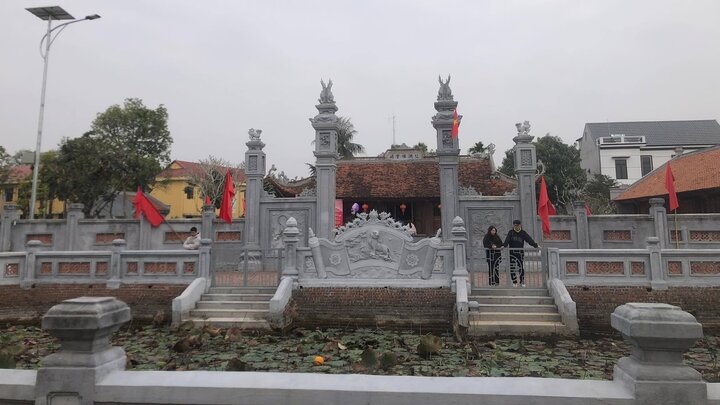1. Overview of Le Lai Temple
1.1 Overview of Le Lai Temple
Trung Tuc Vuong Le Lai Temple is one of the historical and cultural relics with the characteristic ancient features of Thanh Hoa region. The temple is located in Thanh Son village, Kien Tho commune, Thanh Hoa province. In the past, this land was called Dung Tu village, Thanh Hoa prefecture, about 6 km west of the Lam Kinh Main Palace.
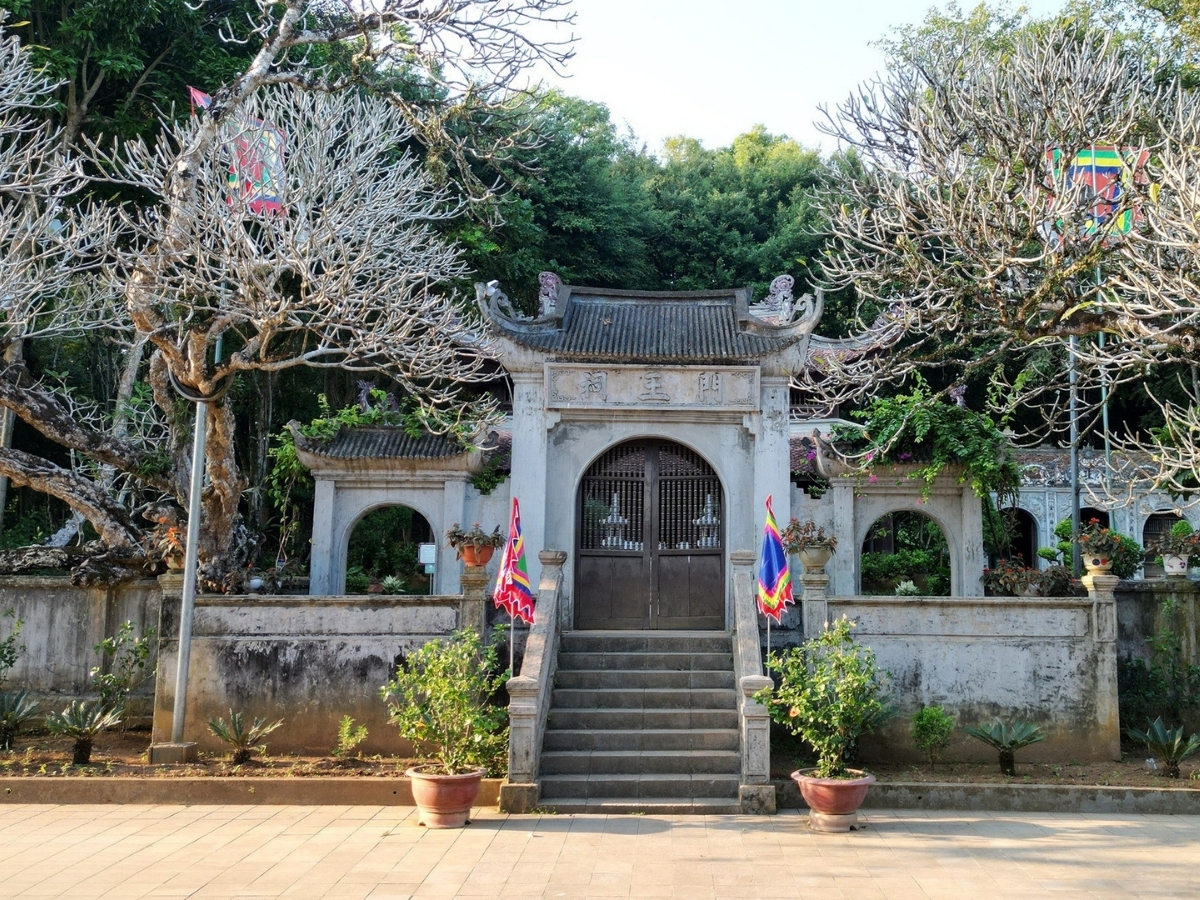
Entrance to Le Lai Temple with a solemn atmosphere. (Source: Collected)
The temple is affectionately called Temple Tep by locals. This is where the hero Le Lai is worshipped, who bravely sacrificed himself to save Lord Le Loi during the Lam Son Uprising. Located on a low hill, the temple faces southeast, a direction considered a symbol of wisdom and divinity according to ancient feng shui. The land formation resembles a dragon guarding and a tiger crouching, the spacious landscape, and lush greenery create a sacred, solemn, yet familiar space for the temple.
1.2 History of formation and life of Trung Tuc Vuong Le Lai
In the year Binh Than (1416), at the oath-taking ceremony in Lung Nhai, Le Lai, along with Le Loi and 18 close generals, swore to live and die together, vowing to unite in driving out the Ming invaders and reclaiming the country. At that ceremony, Le Lai's name was second only to Le Loi's, demonstrating his position and absolute loyalty.
Three years later, in 1419, when the Lam Son rebels were besieged by the Ming invaders on Chi Linh mountain, the situation was extremely critical. Le Lai volunteered to wear Le Loi's royal robe, risking his life to go into battle to distract the enemy forces, creating an escape route for the rebels. He was captured and taken to Dong Do, where he endured torture and died heroically. Moved by his loyalty and righteousness, after achieving victory, Le Loi ordered Le Lai's remains to be found and buried in Lam Son, and decreed that Le Lai's death anniversary should be observed one day before his own.
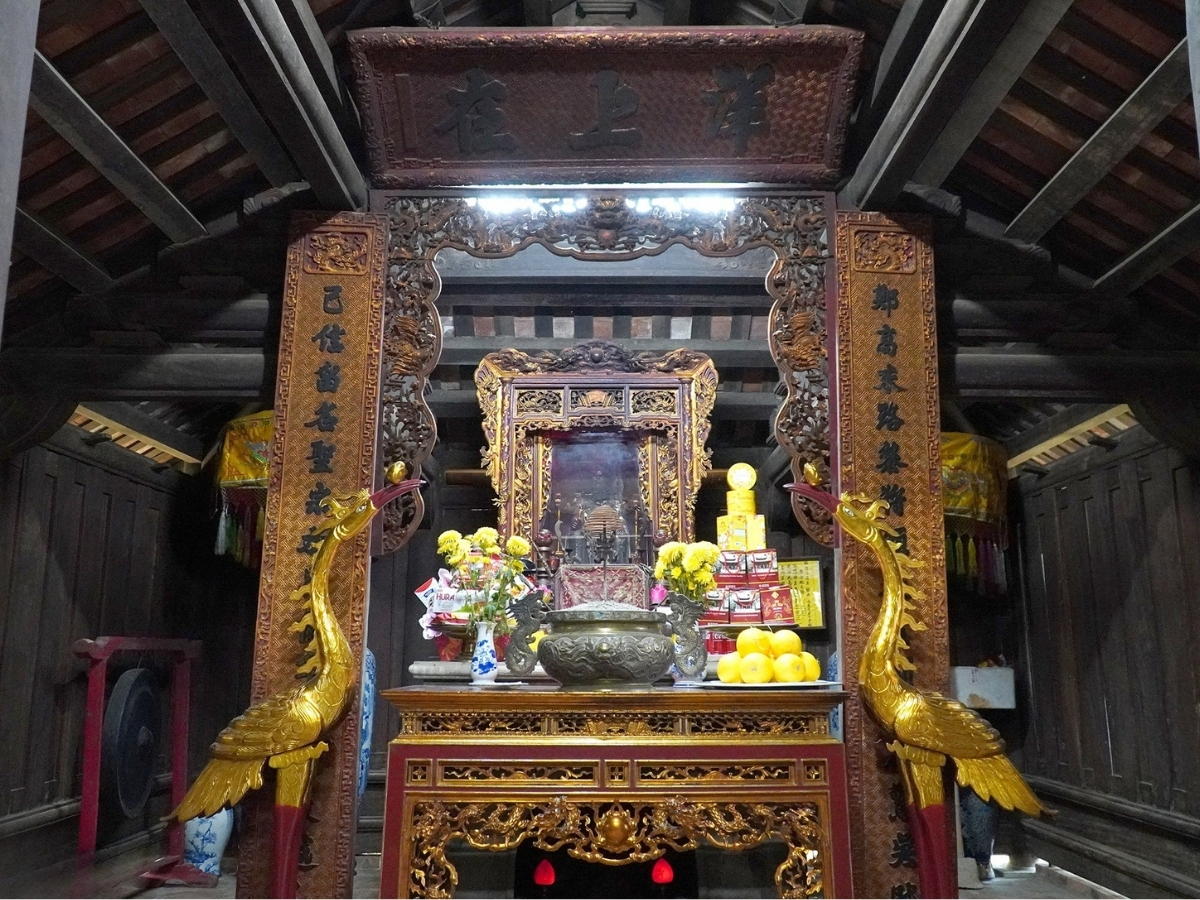
The altar of Le Lai is inside the temple. (Source: Collected)
The temple was built in the 7th year of the Thai Hoa reign (1450), during the reign of King Le Nhan Tong, to commemorate the great contributions of the general. In the 14th year of Dai Bao (1939), the temple was renovated and restored with bricks, tiled roofs, and columns and beams made of ironwood. Despite many historical events, the structure had fallen into disrepair but was restored in 1997, helping to restore the majestic appearance of the relic to this day.
2. How to get there and travel experience
The journey to Le Lai Temple starts from the center of Thanh Hoa, about 55 km to the Northwest. Visitors can choose two main routes: National Highway 47 or National Highway 45, both conveniently leading to the Kien Tho commune area.
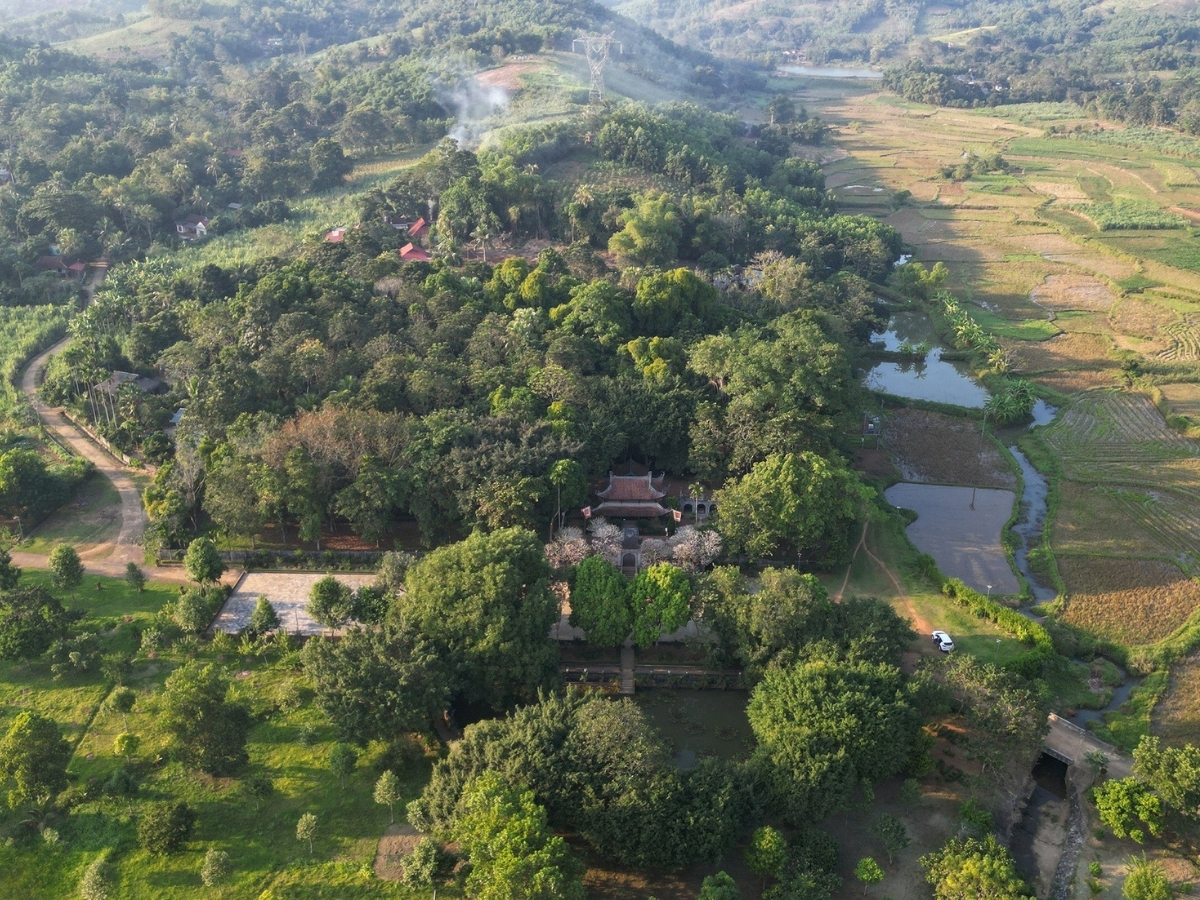
The natural space around the Le Lai Temple. (Source: Collected)
The road to the Le Lai Temple leads visitors through lush green rice fields, past peaceful villages characteristic of the Thanh Hoa countryside. As you approach the temple area, you will find the temple situated on a low hill, creating a space that is both solemn and close to nature.
From the foot of the hill, visitors park their vehicles such as cars or motorbikes at the parking lot, then leisurely walk up the stone steps leading to the main hall. These stone steps are not only convenient for movement but also evoke a sense of solemnity, helping each person prepare their mindset to enter the sacred space of the ancient temple.
3. Ideal time to explore
The most suitable time to visit the Le Lai Temple is in spring and autumn, when the Thanh Hoa weather is pleasant, the trees are lush, and many unique traditional festivals take place. All of this helps bring an unforgettable cultural experience to visitors.

Palanquin procession at the Le Lai Temple festival. (Source: Collected)
A prominent highlight of the year is the festival at Le Lai Temple, held in the 8th lunar month. During this time, the festival atmosphere is vibrant with traditional performances such as dragon dances, Chau Van singing, and incense offering rituals. The festival is a part that vividly reflects the spiritual life of the people of the Thanh Hoa region from ancient times to the present.
Additionally, on the 21st and 22nd of the 8th lunar month annually, the commemoration ceremony for King Le Thai To and Trung Tuc Vuong Le Lai takes place. This event attracts a large number of people and visitors from all directions returning to offer incense, creating a sacred and very traditional atmosphere at Le Lai Temple.
4. Outstanding experiences at Le Lai Temple
4.1 Structures and relics
In 1997, the front hall was repaired and restored on the old foundation, following the traditional interlocking timber frame architectural style. The entire structure was manually assembled using a system of columns, beams, and rafters with high precision, demonstrating the exquisite craftsmanship and skillful workmanship of the artisans from the Thanh Hoa region. The decorative carving motifs in the temple mainly consist of stylized clouds, waves, and floral patterns, symbolizing the harmony of yin and yang and representing the endless flow of cosmic energy.
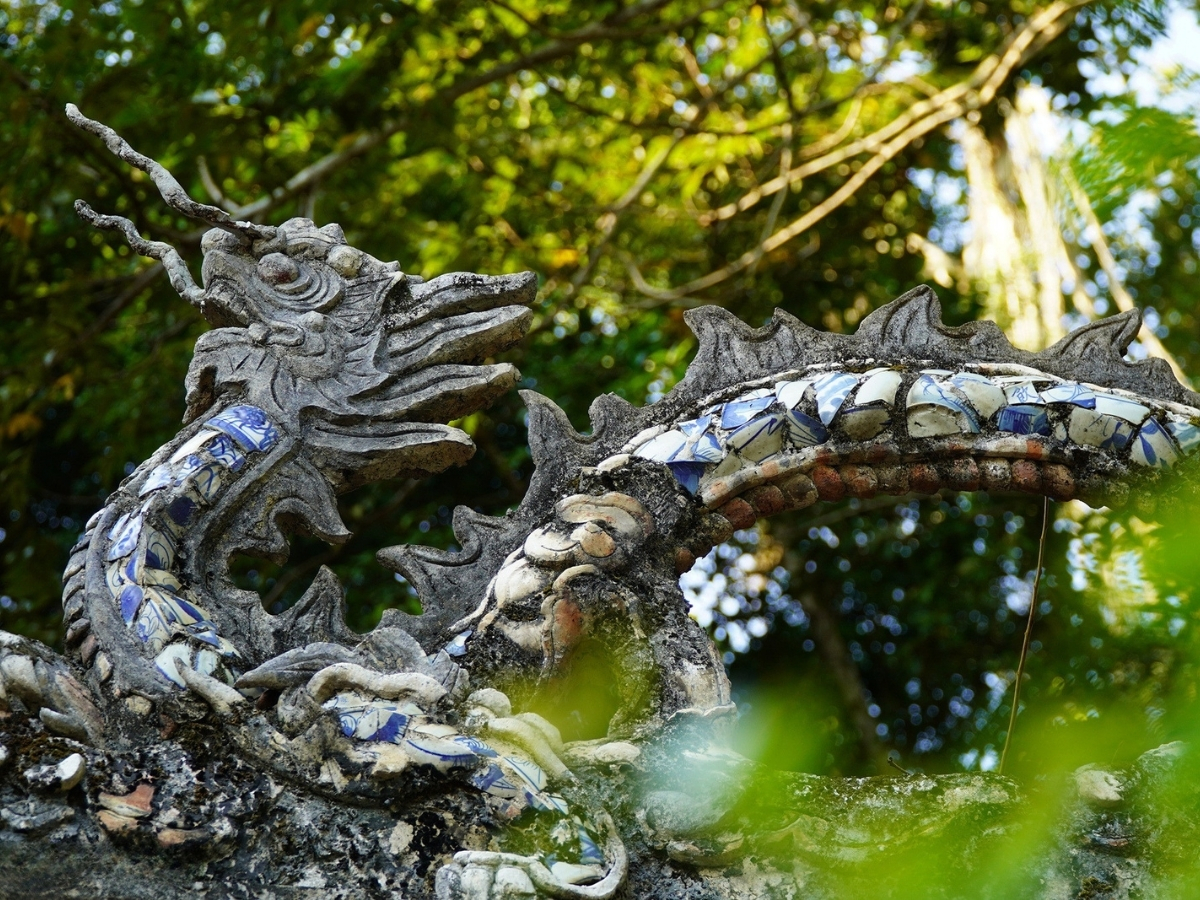
Statue of two dragons flanking the moon at the temple dedicated to Le Lai. (Source: Collected)
The front hall consists of three bays, serving as a place for visitors from all directions to stop and worship, preparing offerings before entering the main sanctuary for rituals. Behind it is the inner sanctuary, built in the unique “upper hall, lower tomb” style. The upper part of the house corresponds to the tomb below, entirely made of precious ironwood with a foundation paved with bluestone. Inside the inner sanctuary are preserved many valuable artifacts, such as horizontal lacquered boards and parallel couplets carved on solid wood, praising the merits and the loyal example of the founding hero and meritorious official Le Lai.
Next to the main temple is the temple dedicated to Lady Nhuong A Thien, wife of Le Lai, also known as the Mother Goddess temple. The structure is built in a Dinh-shaped architectural style, with an integrated front hall and inner sanctuary, and thick brick walls. The roof is decorated with reliefs of two dragons flanking the moon interspersed with dancing phoenixes, while the gable ends are adorned with tiger masks symbolizing power and protection. The entire structure is built of ironwood, roofed with red tiles. The architecture of the temple, though simple, is sturdy, exuding a rustic and sacred atmosphere.

Temple dedicated to Saint Mother Nuong A Thien. (Source: Collected)
In front of the temple complex is a crescent-shaped lake with clear blue water year-round, its surface blooming with lotuses and water lilies emitting a fragrant scent. Surrounding it are ancient trees such as banyan, magnolia, and soursop... hundreds of years old, creating a tranquil and solemn atmosphere. Notably, the two ancient magnolia trees on either side of the three-gate entrance are likened to natural screens protecting the temple. Seen from afar, the Le Lai Temple appears nestled beneath the deep green foliage, exuding both antiquity and sacredness.
4.2 Le Lai Temple and its Historical and Cultural Values
The name of Trung Tuc Vuong Le Lai has become an inseparable part of Vietnamese national history, a founding meritorious official of the Le dynasty, and a shining symbol of loyalty and righteousness. Le Lai's tragic sacrifice not only helped the uprising escape a dead end but also left a profound mark on the spirit of "sacrificing oneself for the country, forgetting oneself for righteousness".
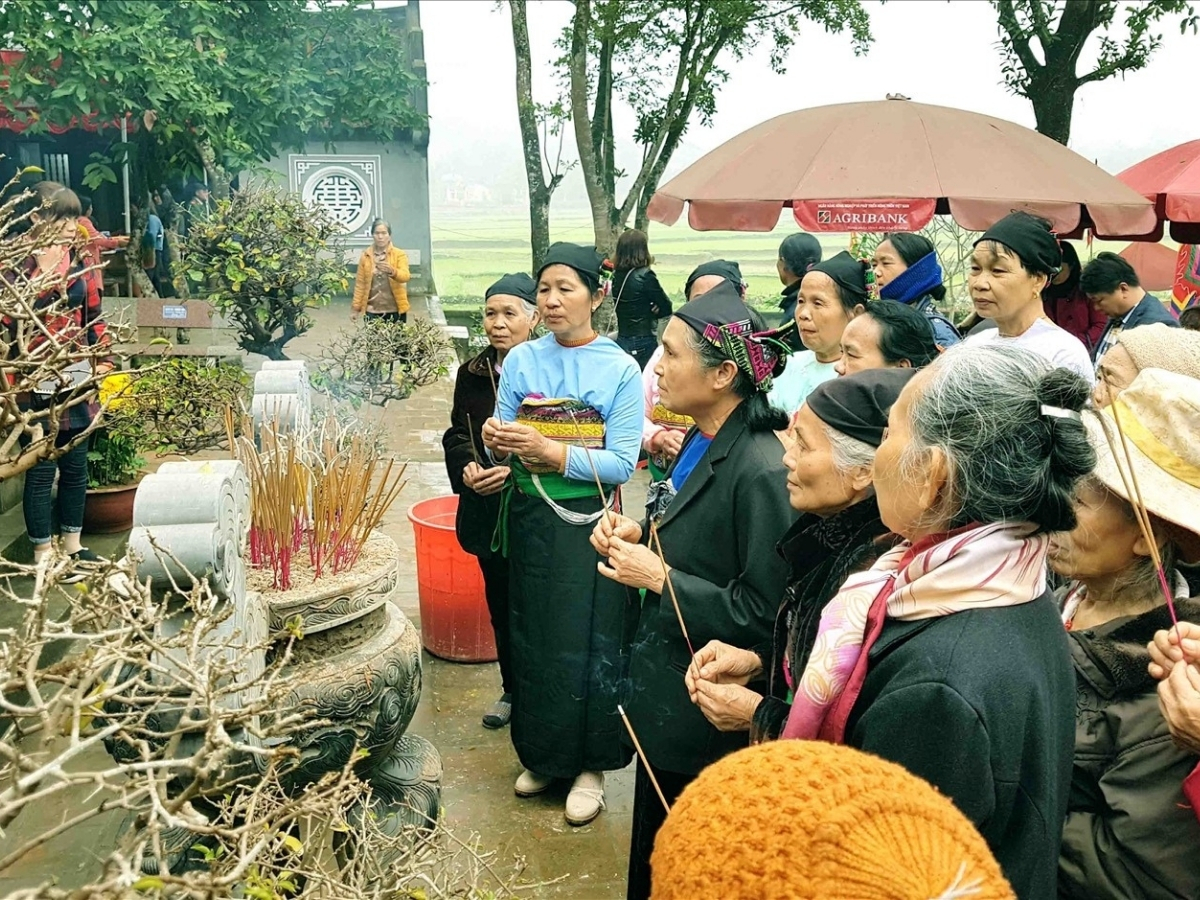
Visitors and locals offer incense at the temple. (Source: Collection)
Le Lai Temple is not only a place to commemorate the merits of the Lam Son hero, but also a symbol of gratitude to the entire Le Lai family, a heroic clan dedicated to the country throughout their lives. His three sons, Le Lo, Le Lo, and Le Lam, were all talented generals who bravely sacrificed themselves in the battles for independence. Therefore, Le Lai Temple not only honors one person but also celebrates an entire loyal and righteous family, contributing to deeply embedding the Vietnamese nation's tradition of 'loyalty to the king, love for the country'.
Through many centuries, the temple has been preserved and renovated by the people of Thanh Hoa, becoming a vivid testament to the patriotic spirit. This place is not only a sacred destination to offer incense and commemorate but also a 'red address' for educating cultural traditions for the younger generation.

Muong ethnic people performing gongs at the festival. (Source: Collected)
Visiting the temple of Trung Tuc Vuong Le Lai, especially during the festival on the 8th day of the first lunar month, visitors can not only admire the unique ancient architectural beauty but also immerse themselves in the unique cultural atmosphere of Thanh Hoa. Activities such as palanquin processions, dragon dances, festival drums, gong performances, Neu dances, Pon Pong dances, ball throwing, swing... carry the strong identity of the Muong ethnic people. All help recreate the heroic atmosphere of the Lam Son uprising period, leaving a deep impression in the hearts of every pilgrim.
The temple is a testament reminding every Vietnamese person about courage, loyalty, and the aspiration for independence and freedom. Although time has passed, the spirit of Le Lai and Lam Son still resonates, continuing to inspire future generations about the virtue of sacrifice and the indomitable spirit of the Vietnamese people.
5. Tips and notes
To make the visit to the temple of Trung Tuc Vuong Le Lai complete and meaningful, visitors should note some small points below to show reverence and immerse themselves in the sacred space of the relic:
Should choose modest, neat, and polite attire, avoid wearing short or overly bright clothing to maintain the solemnity of the place of worship.
Maintain a respectful and orderly attitude within the temple grounds, limit loud talking or laughing so as not to disturb the solemn atmosphere.
Move gently, show reverence when offering incense and visiting the worship areas.
Prepare simple offerings such as fresh flowers, betel leaves and areca nuts, fruits... to offer
If visiting during the festival (8th lunar month), you should proactively arrange suitable time and transportation, to ensure the visit is smoother and more complete.
6. Combining tourist destinations in Thanh Hoa
6.1 Lam Kinh Historical Site
Only about 6 km from the Le Lai Temple, the Lam Kinh National Special Historical Site is a must-visit destination in the journey to explore the Lam Son region. This is the homeland of King Le Thai To, the national hero who led the glorious Lam Son uprising, regaining independence for Dai Viet. Lam Kinh is not only the first imperial capital of the Later Le Dynasty, but also a place that gathers many ancient architectural relics such as the Lam Kinh Main Palace, Dragon Courtyard, Ngoc Well, inner citadel, along with the tombs of Le kings and queens of the Early Le Dynasty.
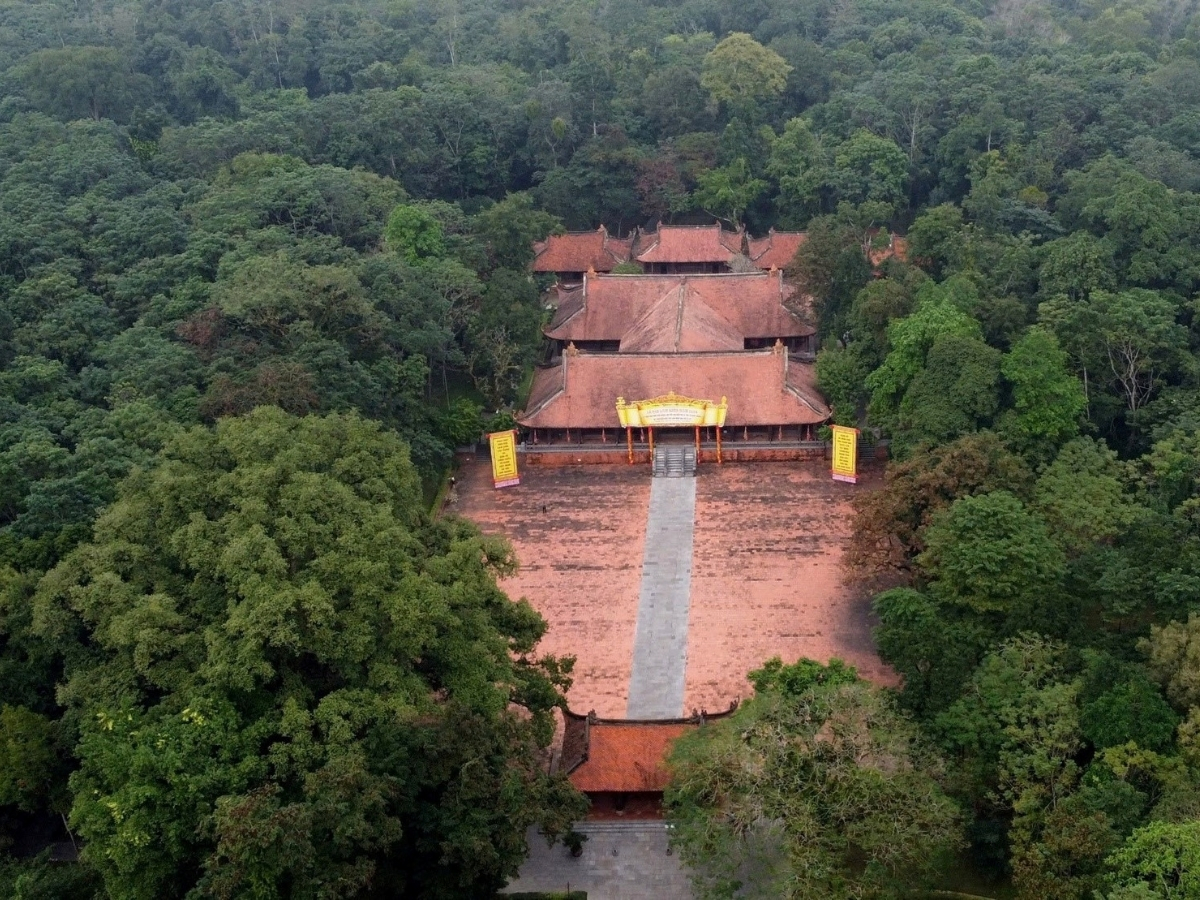
The Lam Kinh historical site complex is associated with the Later Lê dynasty. (Source: Collection)
Upon arriving at Lam Kinh, visitors can immerse themselves in the vast natural space, with ancient lim trees providing shade, interspersed with the majestic remnants of the ancient capital. Each section, each relic, each inscription holds the pride of the nation's golden dynasty. Exploring the entire complex will make a visit to the Lê Lai temple more complete and meaningful.
6.2 Nui Nua Am Tien
Leaving the historical space of Lam Son, visitors can head to Nui Nua - Am Tien, a sacred and majestic destination. For a long time, this place has been considered the “holy land” of Thanh Hoa, associated with the legend of the heroine Trieu Thi Trinh (Ba Trieu) and the mark of the uprising against the Ngo invaders in the 3rd century.

The “Huyen Tich Am Tien” project is highly anticipated. (Source: Collected)
This place is also an ideal location for meditation and prayer, helping to balance the soul after a journey exploring historical sites. Continuing the heritage values, the “Huyen Tich Am Tien” project is currently being invested in and built here. The project is promised to become a new spiritual tourism center for the Bac Trung Bo region and Thanh Hoa province in particular.
6.3 Cam Luong Sacred Fish Stream
About 50 km from the Le Lai Temple, Cam Luong Sacred Fish Stream is one of the most unique ecological and spiritual tourist destinations in Thanh Hoa. At the foot of Truong Sinh Mountain, the crystal-clear stream year-round is home to thousands of fish revered by locals as “sacred fish,” mascots symbolizing luck and peace. What's special is that the fish here never leave the stream, whether the water is low or full, adding a legendary aura to the place.
Visiting Cam Luong, tourists can stroll along the stream, watch the fish swim, and combine it with a visit to the sacred fish temple located right at the foot of the mountain. Not only a relaxing stop amidst nature, the sacred fish stream is also a testament to the unique folk beliefs and the attachment of the people of Thanh Hoa to their homeland's mountains and forests.
The Le Lai Temple is not only a historical relic but also a vivid symbol of the patriotic spirit and loyalty of the Vietnamese people. Every touchpoint here holds a sacred story about a hero who dared to “forget himself for the country.” The journey to explore the ancient temple will bring visitors valuable experiences of history and culture, along with the opportunity to learn about the unique spiritual beauty of Thanh Hoa.


